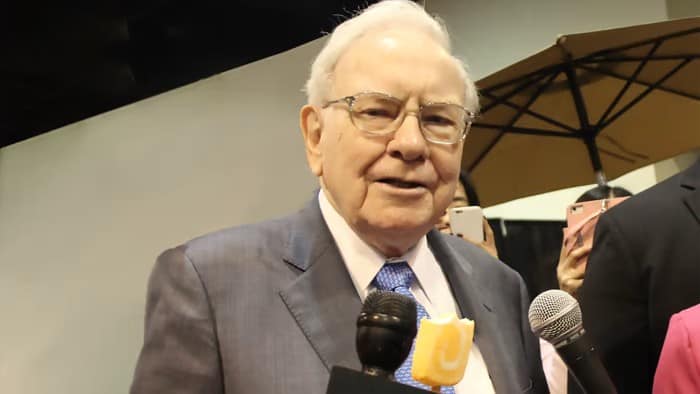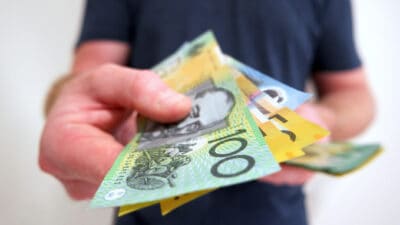1) Despite a choppy session on Wall Street on Friday, the S&P/ASX 200 Index (ASX: XJO) rose in lunchtime trading on Monday in yet another show of resilience for the local stock market.
Once again, as has been the case for most of the year, materials and energy stocks are getting the job done today, with the Fortescue Metals Group (ASX: FMG) share price leading the way higher. It's up 7.67% on the day so far after the iron ore price posted a hefty one-month gain.
The ASX 200 index has fallen just 3.3% so far in 2022, an outstanding return given the Reserve Bank of Australia (RBA) has hiked the cash rate from just 0.1% in April to its current level of 2.85%.
By contrast, although they've enjoyed a nice bounce since the beginning of October, US markets have endured a painful year, the S&P 500 Index down 15% and the Nasdaq Composite plunging almost 28%.
2) Local eyes are on the RBA's final meeting of the year, with consensus expectations the central bank will tomorrow raise the cash rate by another 25 basis points as it continues the fight against inflation.
Financial markets are pricing a peak in the cash rate of about 3.6% early in the second half of 2023, although Bank of America expects the RBA to follow up tomorrow's rise with four consecutive 25 basis point hikes, bringing the terminal rate to 4.1%.
According to the AFR, Bank of America thinks "the RBA is underestimating wage pressures and that its slow hiking pace means more work will need to be done to rein in inflation."
Whichever way you look at it, we're closer to the end of the heavy lifting on interest rates than the start. That's good news for equity markets.
The bad news for equity markets is higher interest rates will put the brakes on economic growth. According to Rate City, monthly repayments on a $500,000 mortgage have increased by $834 since May.
That's a LOT less money that can be spent on discretionary items such as clothing, gadgets, and couches. It explains why the share price of JB Hi-Fi (ASX: JBH) trades on a fully franked dividend yield of 7% and a price-to-earnings (PE) multiple of just nine times profits.
3) Although inflation may have peaked, a mild recession is the base case scenario for the US economy. It's going to be hard for many companies to grow their profits, with many going into reverse as profit margins also come under pressure.
It's why investing into the teeth of a bear market is so hard. Companies like JB Hi-Fi might look cheap today, but less so based on next year's earnings. As predicting the near-term future is virtually impossible, investing in individual companies today means taking a leap of faith.
Buying quality companies with strong balance sheets and minimal debt – and JB Hi-Fi certainly fits that bill – is one way to mitigate the risk. But will that stop you bailing out if/when: a) a bout of stock market volatility hits and b) a subdued trading statement smacks the share price lower?
Many investors fail to enjoy the attractive long-term returns on offer from investing in the stock market because they interrupt the effects of compounding. They may buy a stock with the intention of holding it for five years or longer, but there's a heck of a lot that can happen to a company and its share price over that time period, likely including a peak-to-trough fall of around 50%.
Investing regularly into a few low-cost index-tracking exchange-traded funds (ETFs) is a great option for most stock market investors. It takes stock picking out of the equation, and volatility is greatly reduced.
My favoured option is the Vanguard MSCI Index International Shares ETF (ASX: VGS). If you want to throw in a local flavour, consider adding the Vanguard Australian Shares Index ETF (ASX: VAS). You'll get exposure to the big miners, the big banks, and the big supermarkets.
4) If you are a stock junkie like me, and you have ambitions of outperforming the market, investing in individual companies can be interesting, fun, and rewarding.
That said, it can also be very challenging, as it has been for many investors over the past 15-odd months.
The very best stock pickers only get it right six times out of ten, because when they do pick a big winner, the upside is unlimited. Imagine putting $5,000 into one stock and 10 years later, look back and see it has appreciated 2000%, turning that one investment into over $100,000.
Fun, right?
Not so much fun are the inevitable losers, the four out of ten you'll get wrong. Although a few of the stocks I highlighted a month ago have had good recent runs, I'm still in the hole on a number of my small and microcap holdings, including Plenti Group (ASX: PLT) shares and Bluebet (ASX: BBT) shares.
On those latter two, hopefully, it's a case of waiting for the market to appreciate their growth prospects and modest valuations. Although it could also be a case of me being wrong and their share prices never recovering, or worse, declining further, ultimately potentially leaving me sitting on losses of around 80%.
5) It's why portfolio sizing is key. I try not to chase my losers, especially ones whose share price is declining at the same time as the growth of the underlying business is slowing. That's the case with Plenti and Bluebet, and why I'm not adding to my holdings despite the share price weakness.
It took me many years to realise I'm no investing genius like Warren Buffett, someone who takes huge high conviction bets on a very small number of companies. For mere mortals, hedge your bets by spreading your bets across 20 or 30 different stocks. The winners will inevitably rise to the top, the losers slowly disappearing into tiny, inconsequential holdings.
I also realise I'm no Warren Buffett when it comes to investing returns. He's compounded at an average annual return of 20% for 56 years. If you can do between 8% and 12% for 20 or 30 years – including regularly adding money to the market over that period – you'll do very well as an investor.









